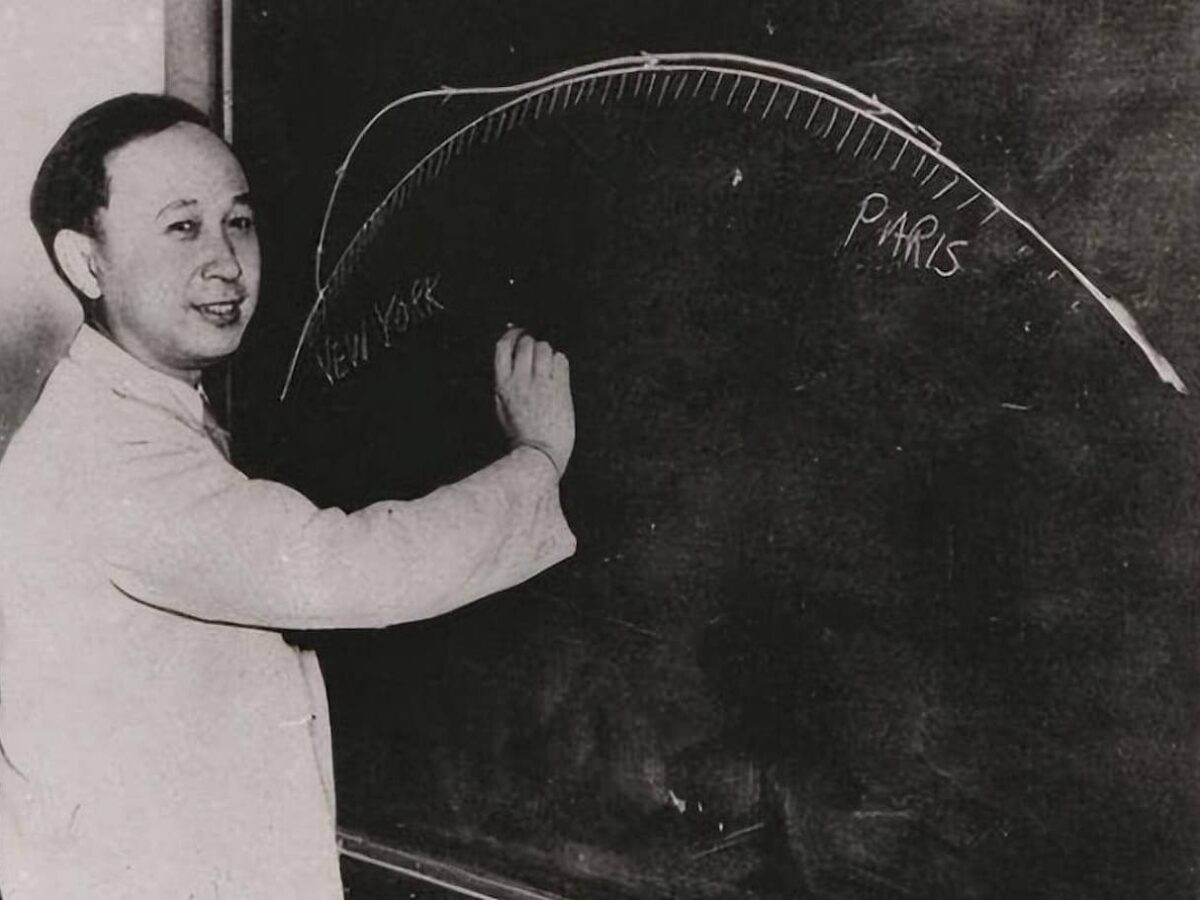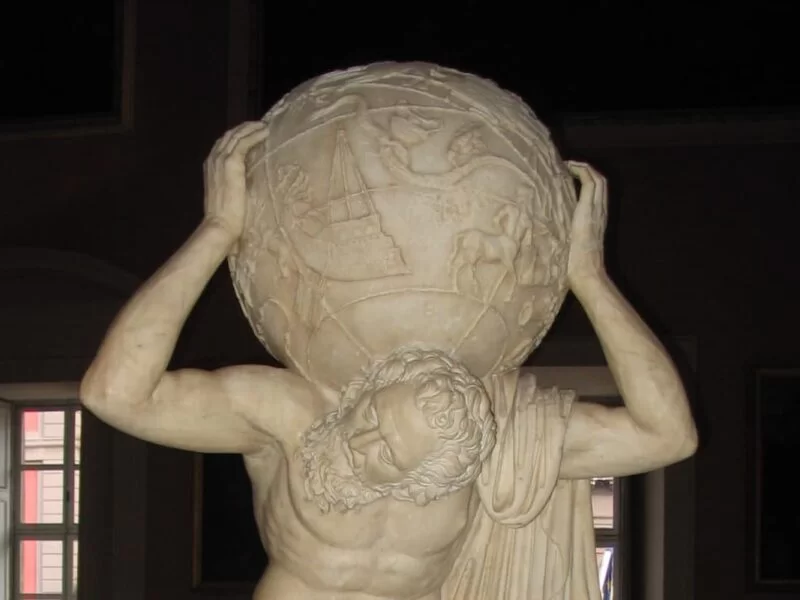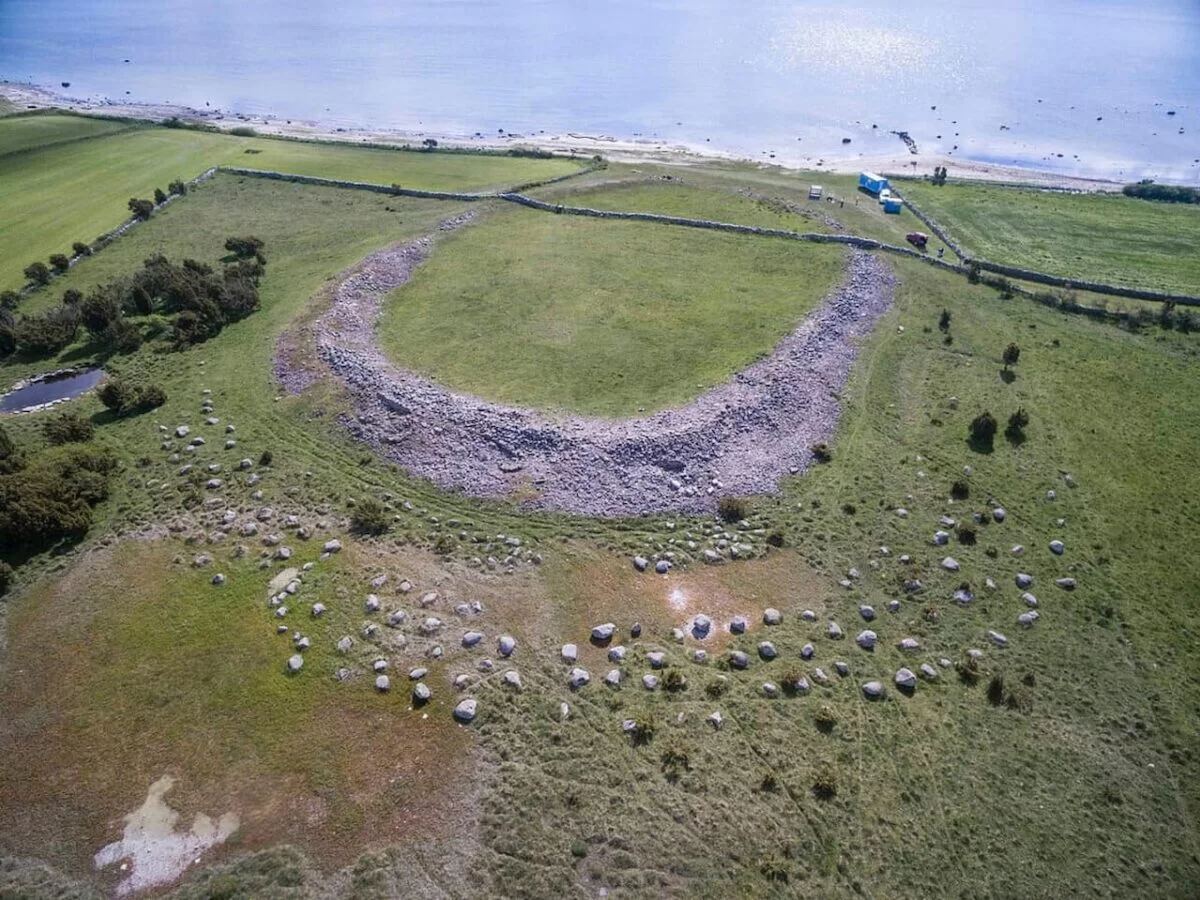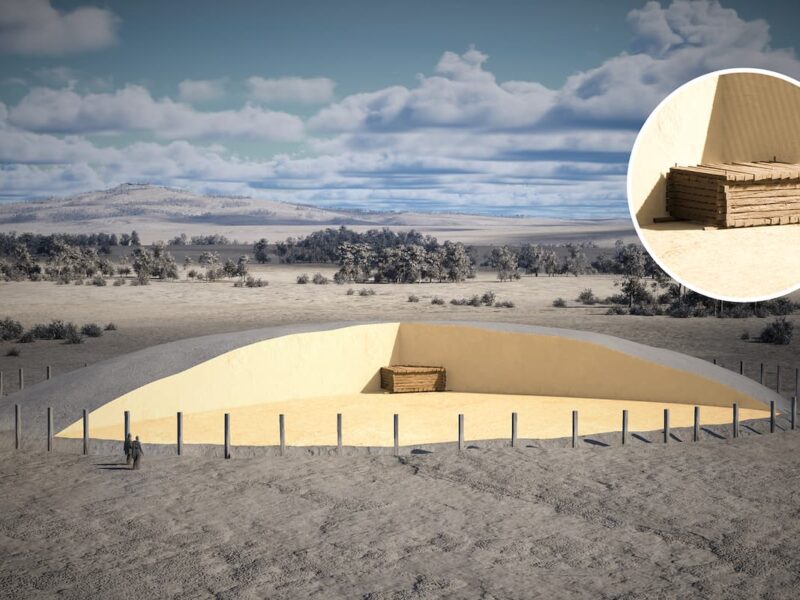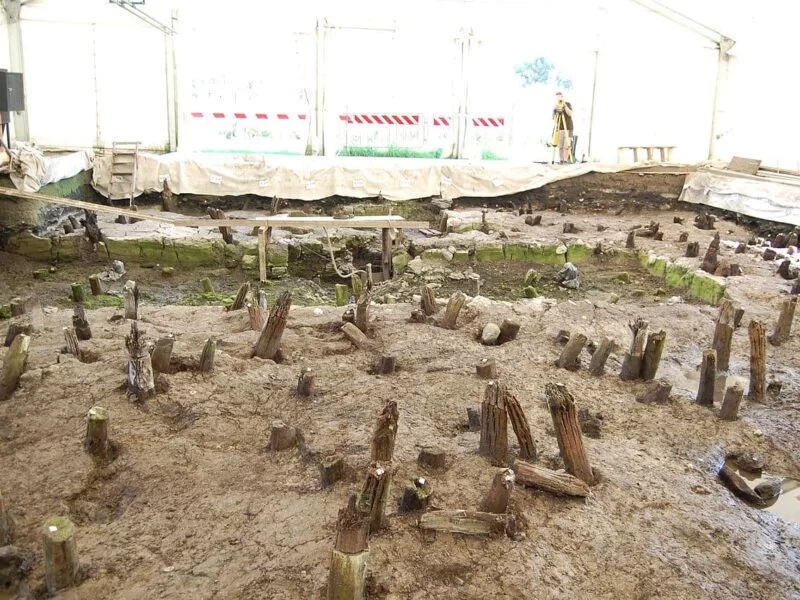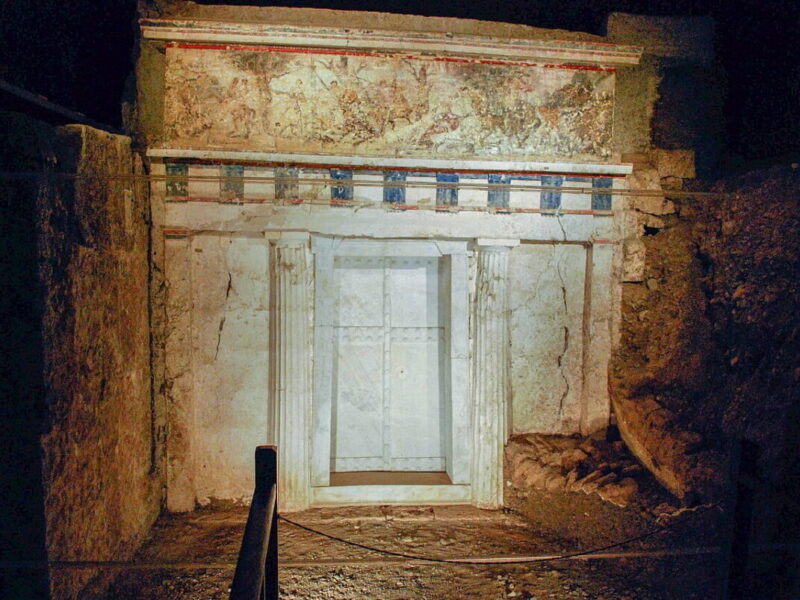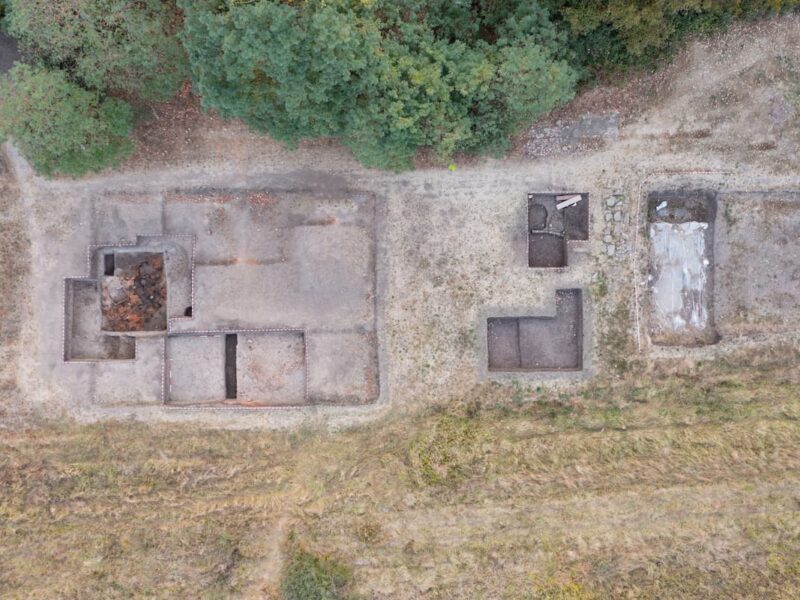Year 29, second month of the Inundation, day 10. Today the work squad crossed the walls of the necropolis [the checkpoint] shouting, “We are hungry!” Eighteen days have passed in this month [since the men] sat behind the funerary temple of Thutmose III.
This paragraph corresponds to what is known as the Strike Papyrus, preserved in the Egyptian Museum of Turin. It is a document measuring 40 x 5 x 95 centimeters that contains the description of what, as its name indicates, can be considered the first strike in history; or at least, the oldest one of which we have record, since it seems reasonable to imagine that there might have been a similar situation earlier, both in Egypt and Mesopotamia. Remember that, for example, the Akkadian tablet of Ea-Nasir attests to the first mercantile claim at the end of the fourth millennium.
The Egyptian papyrus is later, dated around 1170 B.C. It was written in hieratic script by a scribe named Amenemhat to inform the authorities of the protests that, over several days, the workers of Deir el-Medina were carrying out due to the delay in the delivery of their provisions. In fact, Amenemhat reflects the desperation of the situation of those people by reproducing their anguished words:

If we have reached this point, it is because of hunger and thirst; there is no clothing, no ointments, no fish, no vegetables… Write to the Pharaoh, our perfect lord, take note of our words and write to the vizier, our superior, because we need our provisions.
How had it come to such extremes? To understand it, we have to go back in time a bit. From the historical beginning of their civilization, the Egyptian economy is classified as that of an agrarian empire whose mode of production is not slave-based – more characteristic of later Greek and Roman times – but is usually defined as Asiatic or hydraulic despotism. This system was based on the exploitation of the fields that stretched along the Nile Valley, with the state retaining the surplus, which became part of reserves planned for critical moments.
A fundamental part of this system was the employment of people in personal service for a series of large infrastructure projects, dedicating their free time during the annual flood cycle when water inundated the fields. While the fields remained flooded, the idle people constituted a danger, so they were kept busy working for the Pharaoh. It was not free labor but waged labor, paid in kind because in Ancient Egypt, coins were not minted until the 30th dynasty, in the Ptolemaic era (4th century B.C.).
As happened in almost all aspects of Egyptian civilization (art, state organization, religion), this labor organization had a long duration over centuries and millennia; it is found from the Old Kingdom, with the construction of the pyramids being the most obvious example, but also in the New Kingdom, two thousand years later. The strike we are talking about took place during the reign of Ramesses III (second pharaoh of the 20th dynasty, which began around 1184 B.C. and ended around 1153 B.C.).
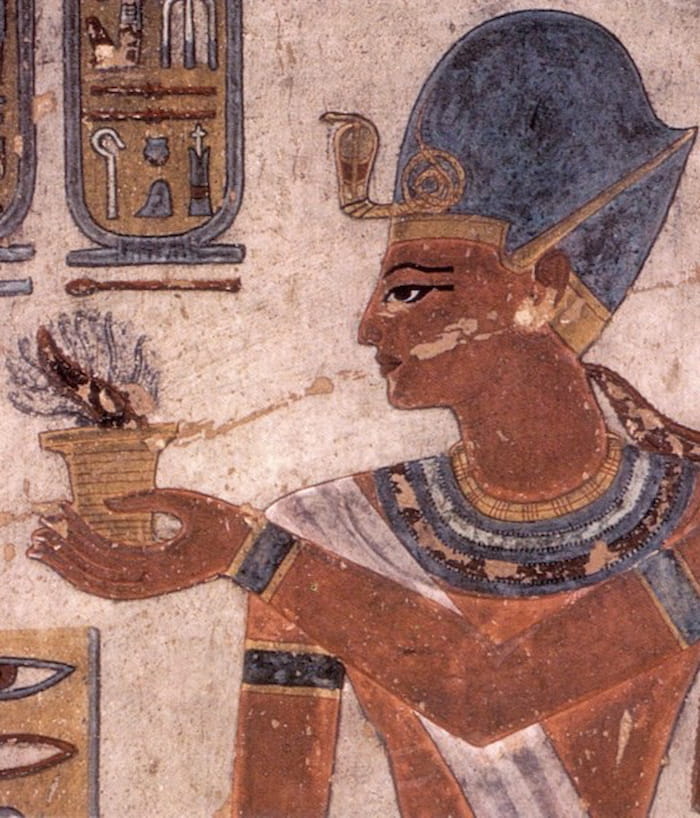
Usermaatre-Meryamun Ramesses-Heqaiunu, the full name of Ramesses III, was the son of Sethnakht, who likely descended from a son of Ramesses II and barely ruled for three years. He is considered the last powerful ruler of Egypt, mainly for successfully repelling the invasion attempts by the Libyans and the Sea Peoples. However, despite the victory, these wars caused an economic crisis in the country by depleting the state treasury. It was a critical moment in history, contextualized in the transition from the Late Bronze Age to the Iron Age, which, as we will see, had its social repercussions in Set Maat.
Set Maat (“Place of Truth”), better known by its Arabic name Deir el-Medina (“Monastery of Truth”), was a village founded by Thutmose I at the entrance of the Valley of the Queens, somewhat removed from Luxor due to its function. It was inhabited by workers and artisans (called “Servants in the Place of Truth”) settled there to work on the construction of the tomb of this pharaoh. Faced with the continuous looting of the necropolises, Thutmose III decided to change the mastaba model to a hypogeum (a tomb excavated into the side of a hill). The Valley of the Kings, where rulers were subsequently buried, was also nearby.
The village started with a few dozen houses surrounded by a perimeter wall but grew and grew, doubling its size. The buildings were simple, made of adobe and with a single floor, arranged on either side of a main avenue that crossed the complex diametrically. The local dump has provided numerous ostracas (clay tablets used for writing by incision) that give Egyptologists valuable information about daily life, social hierarchy, etc. There was a certain autonomy, as evidenced by the fact that the workers themselves formed courts for serious cases (minor offenses were the responsibility of the overseers).

We know that the workers signed a contract that stipulated the term of service and the salary. Payment, which could be three times what they earned in the fields, was made in the form of grain rations for each family, based on their contribution to the work. They were also given plots of land to cultivate and animals to raise (a cow and a donkey, plus several goats and sheep). The workers excavated rock in teams led by a foreman and his assistant, who in turn were under the orders of the vizier. Other wage earners included artisans (stonemasons, painters, etc.), doctors who were responsible for the health of the personnel, support staff (water carriers, plasterers, woodcutters, guards), and scribes who recorded the progress of the project and reflected incidents in their reports.
The workday lasted eight hours, divided into two shifts of four hours each, and they worked eight consecutive days, with people sleeping in makeshift huts on-site and returning to Set Maat to rest for two days before restarting the cycle (Egyptian months lasted thirty days, divided into three weeks of ten days each). The tools belonged to the contractor, the state, which periodically played this role because each pharaoh began to build his tomb shortly after ascending the throne. However, some were especially active in this regard, and Ramesses III wanted to emulate his namesake Ramesses II, expanding the temples of Luxor and Karnak, re-erecting the one in Karnak dedicated to Khonsu, and completing the one in Medinet Habu. Thus, the public employment offer was continuous.
In the case of his hypogeum, located in the Valley of the Kings with the code KV11, it had actually been started by his father, Sethnakht, whose rule lasted very briefly. His son decided to take advantage of it for himself, with the father being buried in another tomb, KV14, usurped from his hated predecessor from the previous dynasty, Queen Tausert. Currently, KV11 is open to the public due to the good preservation of its pictorial decoration, and the mummy of its occupant was found there, transferred to the Egyptian Museum in Cairo.
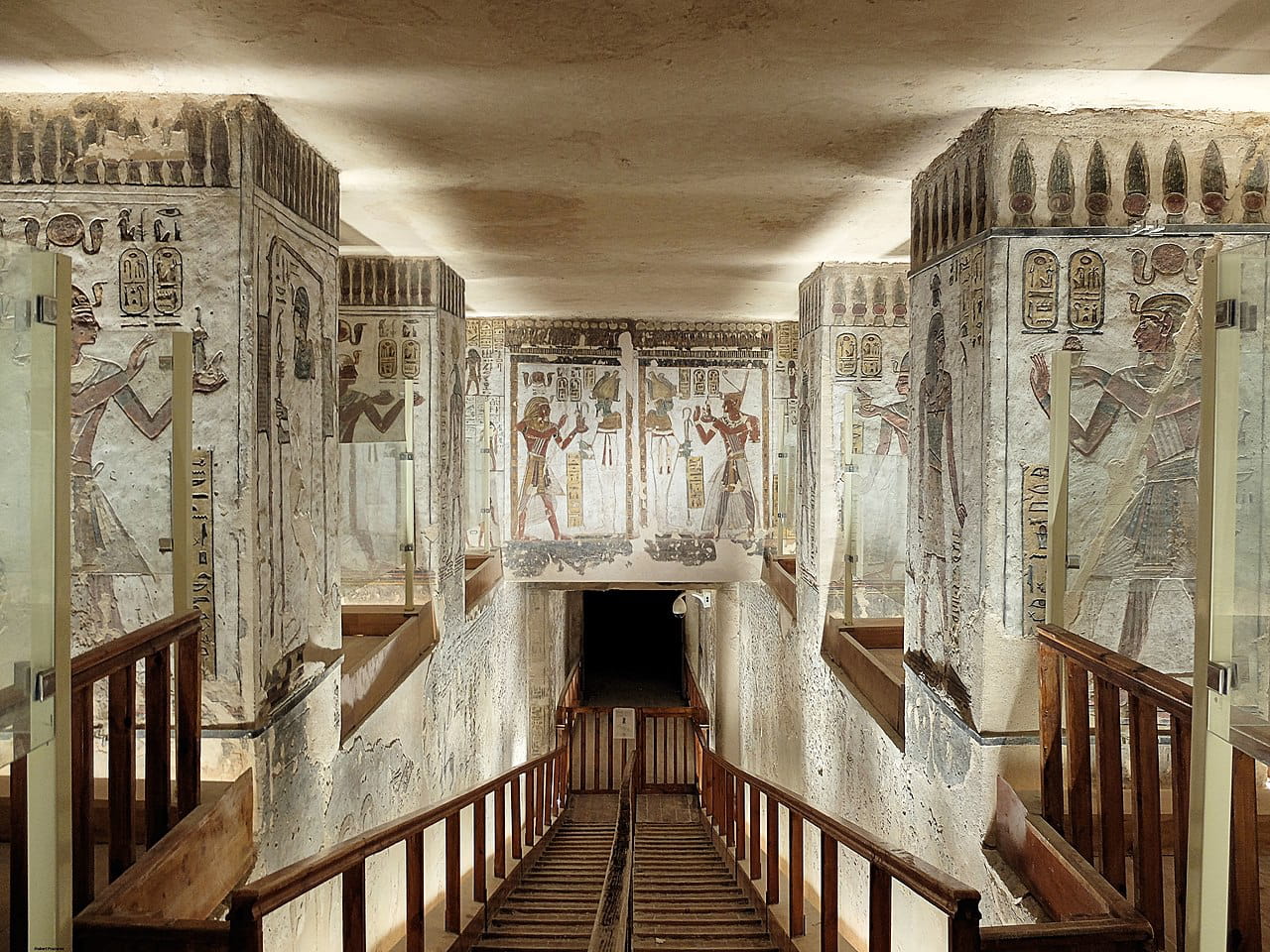
Let’s get back to the point we were discussing earlier. The pharaoh defeated the Libyans in the fifth and eleventh years of his reign and achieved two resounding victories against the Sea Peoples, who had ravaged Hatti, Mycenae, Cyprus, and Ugarit, in the battles of Djahy (in Canaan, present-day Lebanon) and the Nile Delta between 1178 B.C. and 1175 B.C. The aforementioned Medinet Habu temple is covered with reliefs extolling the victory, but the post-war period was also tough for the victor. The Egyptian treasury was depleted, affecting the state’s ability to meet public expenses. This was compounded by other factors that caused a scarcity.
Firstly, the insatiable priesthood of Amun continued to accumulate land, increasing its power and weakening the integrity of the centralized state. On the other hand, a natural phenomenon that seems to coincide with the eruption of the Icelandic volcano Hekla 3 caused a volcanic winter that prevented the passage of sunlight, cooled temperatures in the northern hemisphere, and ruined crops. This cast a shadow over the last years of Ramesses III’s reign, during which conspiracies began to emerge. The pharaoh managed to survive one plotted by his vizier, Atribis, but not another directed by one of his three wives, Tiyi, who sought to enthrone her son Pentawere, excluded from the line of succession.
The Turin Judicial Papyrus and recent analyses of the mummy reveal that the plot had partial success: the pharaoh was killed by decapitation, although the legitimate heir, Ramesses IV, was able to regain control of the situation and execute many of those involved (his stepbrother was forced to take his own life, and the fate of the mother remains unknown). However, before this tragic final episode, the crisis also brought the workers of Ser Maat close to death, in their case due to natural causes, as the aforementioned agricultural disaster raised the price of grain, making it even more difficult for the state to pay their wages.

A correct and timely payment, usually on the twenty-eighth day of the month for the following month, was part of the Egyptian principle of Maat, an abstract concept of cosmic justice, balance, and harmony. Delay was not uncommon – some ostracas attest to this – but it had never reached the extreme of eighteen days that led the people to ask the scribe Amenemhat to send their complaint to the vizier, while they refused to continue working without heeding the good words with which the authorities tried to resolve the situation. A desperate situation that forced them to buy wheat for themselves.
Normally, the rations were taken from the royal granaries with the prior authorization of the vizier. They consisted of a combination of emmer wheat (a wheat derivative) and barley, the former for making flour (from which about ten loaves of bread were made) and the latter for making beer (two and a half jars), which constituted the basic food and drinks. However, vegetables, fish, and water (there are no springs in Deir el-Medina) could also be included. Occasionally, dates, cakes, and ready-made beer were also provided, with less frequent offerings of meat, oil, salt, and natron during festive periods. All these products served both for family consumption and for barter in trade.
Amenemhat recounts that the first protest, restrained and reasonably calm, occurred on the eighth day of the delay. The second came with the twentieth day, coinciding with Ramesses III preparing for his jubilee. Apparently, the governor of Thebes had withheld the supply, and Amenemhat had to personally negotiate with officials for the delivery of forty-six sacks of wheat, which only constituted part of what was due but was enough to get the workers back to work. As the problem continued without resolution, and the need was becoming suffocating, on the eighteenth day of the second month, the workers left their tools and began what can be considered the first strike in history.

Grouped together, they marched towards the temple of Medinet Habu, demanding that the pharaoh be informed of the anomaly in Maat. Apparently, not everyone suffered the same need since payments were made hierarchically (first to those higher up the ranks and then to those who had families to support), and the auxiliaries would be the main victims, considering that the leaders were the meyday, the guards themselves (although others joined them). “Go out, gather your tools, close your doors, take your wives and children, and I will go before you”, urged the meyday leader.
A new distribution had to be improvised to calm tempers, but weeks later, everything returned to the same. This time the tone was more bitter, and accountability was demanded, with the vizier Ta excusing himself by claiming that the granaries were barely half full. This time, on-the-fly distribution was not enough; workers and wage earners fully joined the auxiliaries and left the village as the issue became entangled with accusations of corruption by some officials against Amenemhat and the workers doing something similar with the high priest of Amun. Ta had no choice but to yield again and distribute sacks of grain.
In short, Deir el-Medina was shaken by three successive strikes, during which people lost a fifth of their wages, with the percentage rising to a third the following year. What happened next? It is not known what happened to the vizier, who disappeared from history without a trace, suggesting his involvement in the assassination of Ramesses III. There is also no news of the scribe Amenemhat. As for the work teams, their payment problems became persistent with the following pharaohs: Ramesses IV experienced his first strike a month after his coronation, and the last strikes of which there is information occurred during the reign of Ramesses IX, clearly indicating the unstoppable decline of the empire.
This article was first published on our Spanish Edition on February 5, 2024. Puedes leer la versión en español en La primera huelga conocida de la Historia tuvo lugar en el Antiguo Egipto porque Ramsés III se retrasó con los salarios
Sources
Alfonso Martínez, La primera gran huelga de la historia (en Boletín Informativo de Amigos de la Egiptología) | José Miguel Parra Ortiz, La primera huelga de la historia, en el Egipto de Rameses III (en Historia y Vida) | José Carlos Castañeda Reyes, Sociedad antigua y respuesta popular. Movimientos sociales en Egipto antiguo | Jean-Christophe Antoine, The delay of the Grain Ration and its social consequences at Deir El-Medîna in the Twentieth Dynasty: A stadistical analysis (en The Journal of Egiptian Archeology) | A. Rosalie Davies, The pyramid builders of Ancient Egypt . A modern investigation of Pharaoh’s workforce | Leonard H. Lesko, Pharaoh’s workers. The villagers of Deir El Medina | Il cosiddetto “Sciopero Papiro” scritto da Amunnakht (en Museo Egizio) | Wikipedia
Discover more from LBV Magazine English Edition
Subscribe to get the latest posts sent to your email.









